If you are looking for a simple indoor gardening project that will provide quick gratification and help you boost both the flavor and nutrition of a wide variety of dishes, you should consider growing microgreens and sprouts. Unlike with an outdoor garden that can take weeks to see much progress, both microgreens and sprouts start to flourish in just days.
This is a sponsored post brought to you by True Leaf Market. All opinions are my own.

Microgreens and Sprouts Backstory
In recent years, it seems like there has been a growing trend of microgreens and sprouts popping up everywhere. They are showing up in places you would expect like Farmer's Markets and health food stores and also conventional grocery stores. This coincides with the increasing awareness of the importance of fresh, local, and organic foods.
I don't know about you, but I love them both and think they have a place in everyone's diet.
If you are like me, you may have been eating sprouts for years. I first fell in love with them back when fast food restaurants had salad bars and my parents took us once a week. (i.e. the 80's)
It wasn't until the last five years or so that I even knew what microgreens where.
Both are relatively easy to find these days, but they can be a bit on the pricey side. The good news: you can grow them both at home! It is such an easy project, and it doesn't cost a fortune to get started.
I've sprouted at home for years, and recently added growing microgreens to the mix. You guys…I am seriously hooked. You need both of these in your life!
What are Microgreens?
Microgreens are greens that are harvested very early in their lives. These tiny seedlings are enjoyed at a tender stage and offer unique flavors as well as some amazing health benefits.
Because you can pick them and eat them immediately, you are getting the maximum nutrition - they are loaded with phytonutrients, vitamins, and minerals.
Microgreens have all the nutrients of full-grown produce - and sometimes even more! In fact, a study in the Journal of Agricultural and Food Chemistry found that microgreens can often contain about five times higher concentrations of vitamins and cancer-protective carotenoids as their mature counterparts.
What are Sprouts?
Sprouts are seeds that have been germinated and in the process go through many internal changes. During the process, the seeds absorb water and swell for six to ten times their normal size. Enzymes become active and proteins are converted into free amino acids. Vitamin content increases from 3 to 12 times.
According to studies at the University of Pennsylvania, Vitamin C content in some seed was found to increase up to 700% in the first 72 hours of sprouting.
Like microgreens, sprouts offer a host of health benefits even when small amounts are consumed. They support a healthy immune system, and the nutrients they contain can also be good for your skin, hair, and digestion.
Microgreens vs Sprouts
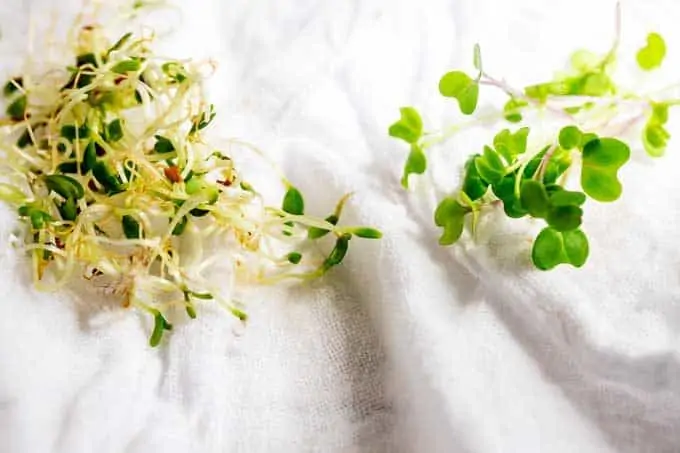
The primary difference between sprouts and microgreens is that they are at different stages of development.
Sprouts are grown in glass jars or sprouting containers where the seeds are kept moist and at room temperature until they germinate. Once they have germinated, they are placed in the sun to green up and then the roots and shoots are eaten. They are popular for both their crunchy texture and nutritional value.
Microgreens are grown in either soil or a hydroponic medium where roots are established and the first leaves open. They are typically only allowed to grow for one to three weeks. Their texture is more similar to a salad green than sprouts.
If you left microgreens to grow, they would become young seedlings. Unlike sprouts, micro greens need a growing medium and bright light to grow. They have a more intense flavor than sprouts and are harvested by snipping off the tops with scissors. If you let them grow too long they won’t taste as good as if you had harvested them young.
How Can You Use Microgreens?
You can eat them on their own as a salad, juice them, or add them to a smoothie. They are also fabulous on sandwiches, burgers, or wraps, added to a salad, or as a garnish for soups and entrees. All it takes is a sprinkle of micro greens to elevate a dish to gourmet fair.
You will be surprised how much flavor you will find in such tiny little leaves. The flavor will vary according to the seed type and can be anything from neutral to spicy. I was literally blown away the first time I tried them - and even more so when I started growing my own. I am pretty sure my mouth was doing a happy dance.
How Can You Use Sprouts?

Sprouts are an excellent addition to salads, sandwiches, and wraps. You can also add them to smoothies or juice. I love using sprouts because not only do they add a fresh flavor but they also add a textural element. Turn your burger into a more wholesome experience by using sprouts instead of lettuce. Avoid cooking sprouts as this will destroy a lot of their health benefits. You may use them as a garnish for warm foods, however.
Why Grow Microgreens?
With a minimal investment of times and money, you can have access to fresh greens all year along. You can grow them either indoors or outside, meaning even if you are in an urban area it is an option for you.
Growing microgreens is a fun project for children too! They sprout and mature quickly, so it is great for even a toddlers attention span. Depending on the seed type, some crops can be harvested in as little as a week. It is a great way to get kids excited by eating their greens.
Growing microgreens offers significant savings. If you buy organic microgreens at the store, you will likely be paying more than $25 a pound! You can grow them at home for a fraction of the cost.
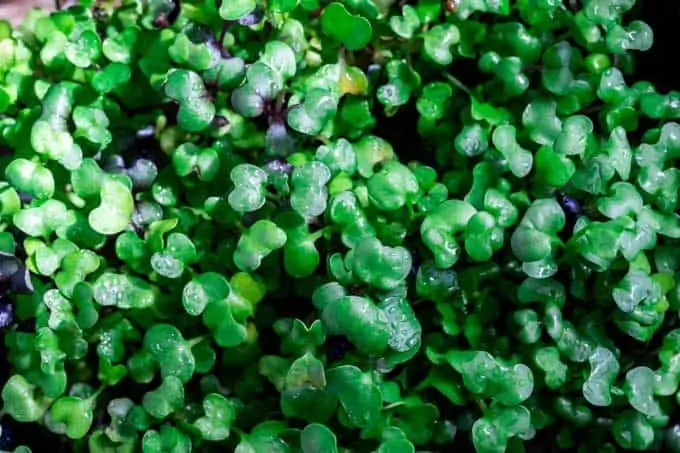
Why Grow Sprouts?
Sprouts are commonly available at most grocery stores, but growing them yourself packs the biggest nutritional punch because freshly harvested sprouts contain the most nutrients. Growing your own sprouts allows you to harvest them when you need them and also gives you control over the quality of seeds. Choose organic when you can, especially when growing alfalfa sprouts because most all alfalfa is GMO.
As with microgreens, growing sprouts at home is a tremendous savings as you can expect to pay around $5 for just three ounces of organic sprouts at the store.
Another benefit of growing your own sprouts is that there are so many options of what types of seeds to sprout! At the store, you will likely be limited to one or two types of sprouts. At home, you can grow everything from lentil sprouts (check out how I used them in this salad), to Chinese cabbage sprouts.
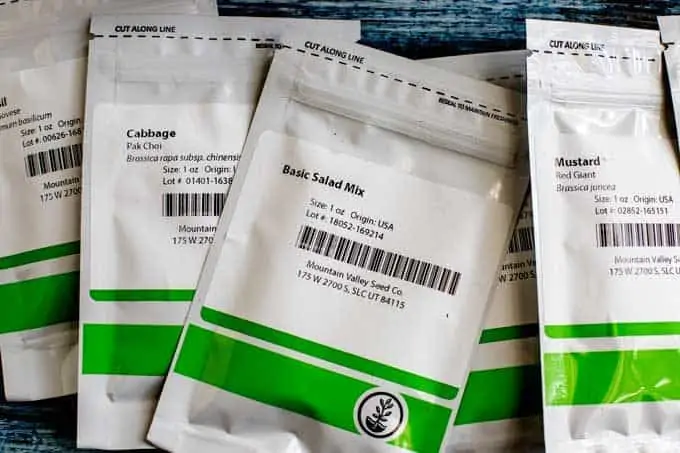
Where Do I Buy Seeds?
It is important to buy seeds from a reputable source, which is why I choose True Leaf Market. They have a great selection of organic seeds and offer high-quality seeds that you can count on to germinate.
While you can harvest most vegetables and herbs as young seeds and many will sprout, it is best to purchase seeds that are labeled as microgreens because they will offer a more consistent yield and can be easier to grow.
How to Grow Microgreens
Ideally, microgreens should be grown indoors with bright light coming from a south-facing window. If you do not have a window with bright light, grow lights are a good alternative. Consider using a small desk fan for good air circulation.
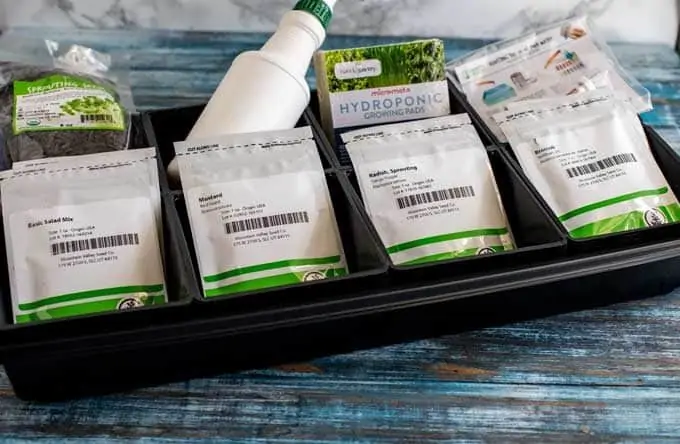
If the climate is mild, they will also grow beautifully outdoors.
Microgreens may be grown in either a sterile potting mix or hydroponically. Either way, you need to be diligent about watering using pH balanced water. Too much water will cause the plants to rot, and too little will cause the crop not to grow. Initially, you want to use the fine mist from a spray bottle to water. Once your crop has matured a few days, you can water from underneath.
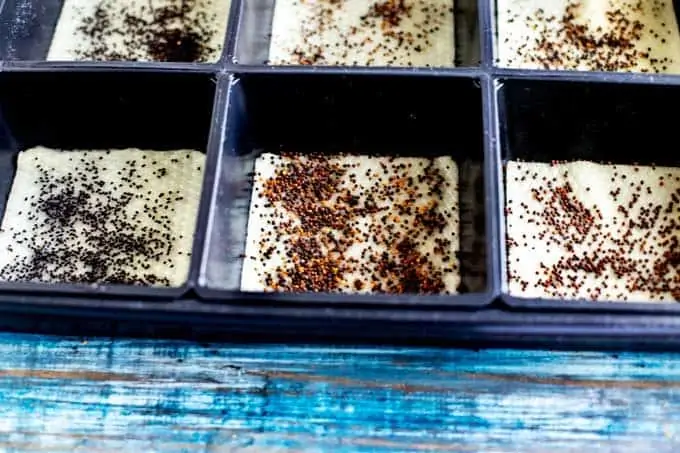
To grow microgreens, you will need a shallow dish or tray, organic soil or a hydroponic growing medium and seeds. I chose to grow mine hydroponically with the Sectional Hydroponic Microgreens Starter Kit from True Leaf Market.
Since I’d never grown microgreens before, I wanted to start out with something easy! The kit has everything you need at a reasonable price. It comes with 6 growing trays, 9 hydroponic grow pads, a pH test strip kid, spray bottles, and an assortment of microgreen seeds.
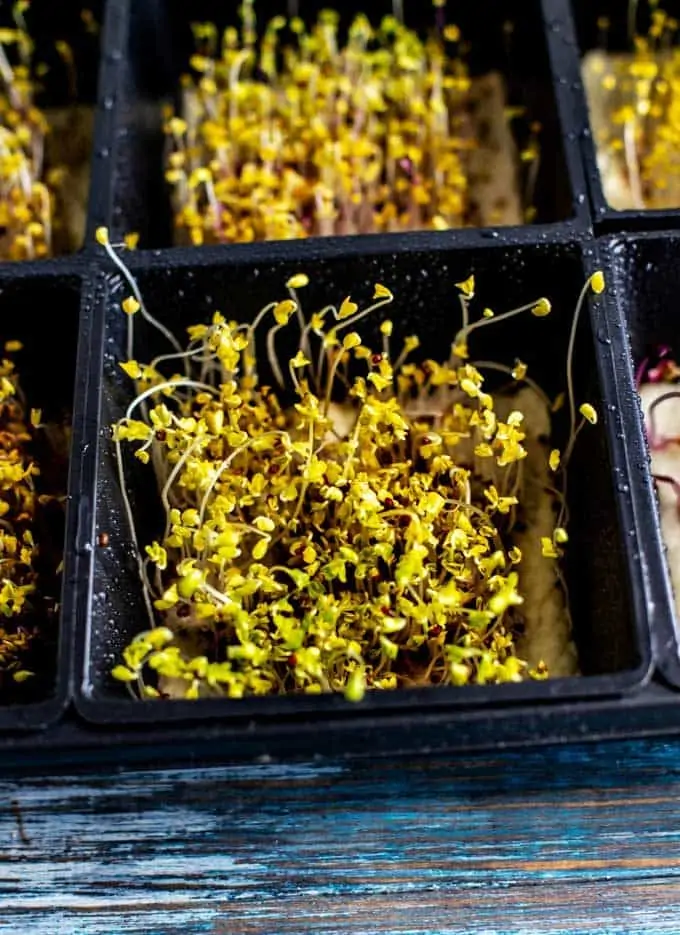
How to Grow Microgreens Without Soil
- Pour a cup of filtered water into a tray without holes.
- Place the hydroponic mat in the tray and allow it to soak up the water.
- Spread about 2 tablespoons of seeds over the mat trying to keep them from all being concentrated in one location. (The amount of seeds will depend on the size of the seed you are sowing. You may use an additional tablespoon with very small seeds.)
- Spray the seeds with pH balanced water. (Instructions on how to pH balance your water come with the kid. It is super-simple and something that is fun to get kids involved in.)
- Cover with another tray to block light.
- For days 1 to 4, uncover the seeds and mist twice a day. Recover.
- After day 4 or 5, when the sprouts have taken root, remove the top tray and place in a bright window.
- Start tasting your crops when the first leaves appear. When you like the flavor, you can harvest!
- To harvest, trying the microgreens just above the roots.
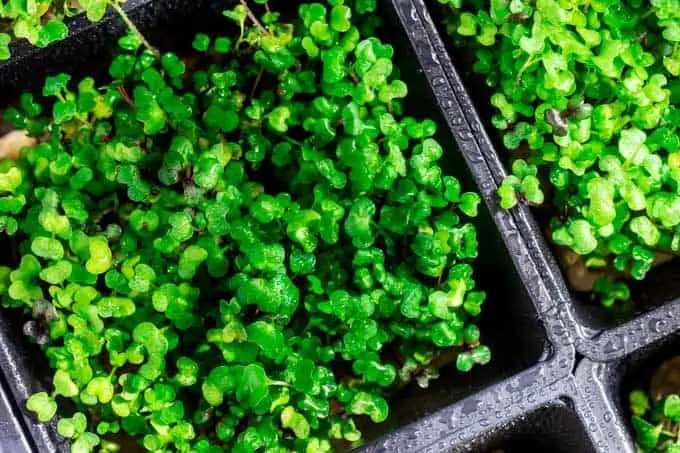
How to Grow Sprouts
I have always grown sprouts in sprouting jars and this is a great option.
However, I recently tried the Basic Tray Sprouting Kit from True Leaf Market and am in love! The kit comes with the Handy Pantry Sprout Garden, which is a stackable sprouter. (You can also use it to grow wheatgrass hydroponically which I plan to do soon.) Also included in the kit are all the seeds you need to keep you in sprouts for a long time.
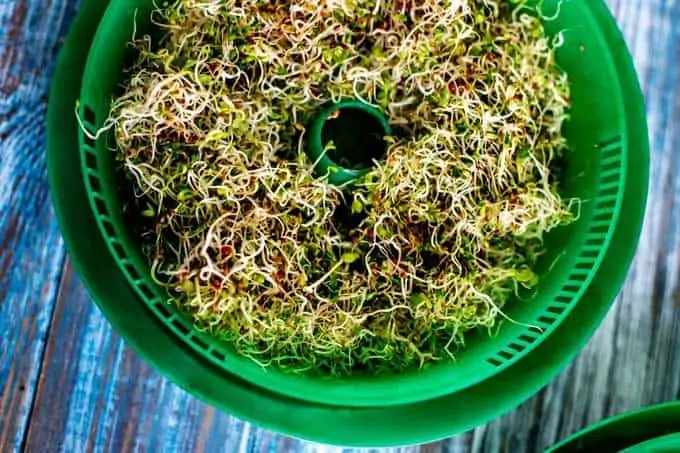
- First, you want to soak the seeds. For a sprouting tray, use either ¼ cup of small seeds or ½ cup of large seeds. Soak for 8 to 10 hours and then drain.
- Transfer to the sprouting tray and spread evenly.
- Rinse and drain the seeds. Recover and Place out of direct sunlight, in a well-ventilated area. You want plenty of fresh air. (i.e. don’t put it in a cabinet).
- Continue rinsing and draining twice a day. Shake to make sure all the water is removed.
- Once the sprouts have ¼ to 1-inch tails they are ready to eat! This should happen between day two and day seven, depending on the type of sprouts.
- Place sprouts like alfalfa and broccoli in direct sunlight to "green".
How Do You Store Microgreens?
Keep microgreens in a sealed bag in the refrigerator for up to one week.
How Do You Store Sprouts?
Dry sprouts very well and store in a plastic bag with a few holes in it for up to a week.



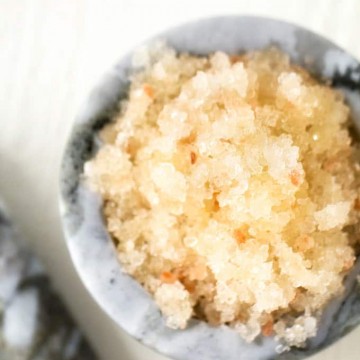


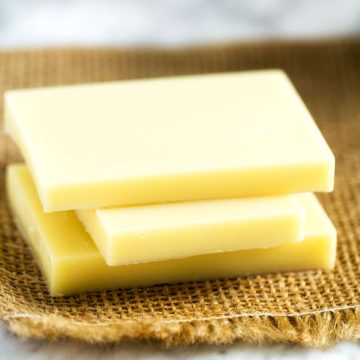
Debra Clark
The first time I had sprouts was when I was a kid at a "fancy" deli - I was in love! Now as an adult, I've realized there are so many ways to enjoy them. However, I never considered growing my own! So looking forward to trying this!
Wendy Polisi
You MUST try it Debra! You would love it. I have always loved sprouts, and microgreens are a new love. I just started a new crop and I'm hoping the one I just harvested holds on until this one is ready.
Stacie
Oh wow! I've always heard that sprouts were good for you, but I never realized they were THAT good for you. I need to eat more sprouts and microgreens, I guess.
KeshiaRichmond
I would love to try microgreens and then perhaps try growing them.
Terri Steffes
I think this is such an easy way to get those nutrients we need into our bodies. Thanks for sharing the ins and out of the growing. I hope to try this soon.
Kristine Nicole Alessandra
I love bean sprouts. They are crunchy with an earthy flavor. I usually add them to spring rolls. Delicious!
Snehal
I did not know what microgreens are. Thanks for such an informative post. Will try to include them more! 🙂
Stephen
That kit sounds amazing. once I settle down and stay in one place I will be checking it out.
Lisa Favre
I had no idea that sprouts were grown in glass jars! I also didn't even realize there was a difference between microgreens and sprouts but agree - we definitely have room for both in our diets.
Heather
Great tips! I didn't know all this info so I'm appreciative for you! Thank you for sharing!
Tiffany La Forge-Grau
I love using fresh greens in my recipes. If I had a little sprout garden like this I would be set for life!
Megha
We keep making sprouts at our home but microgreens is a new concept for me. Thanks for sharing the details. Will try.
emman damian
I love sprouts as it adds texture to my food. Also, I like it because it is healthy.
Pia
Not really into sprouts but I love gardening! So does Mom! Bookmarking this for her. 😉
Ronnie
In a pre-packaged container, this is so much easier than I expected! You just get everything ready-to-go... I love it! We could use something like this at home for our recipes. Plus, it could help teach the kids about where their food comes from and taking care of plants.